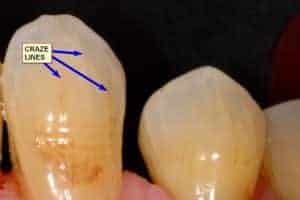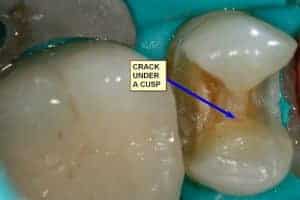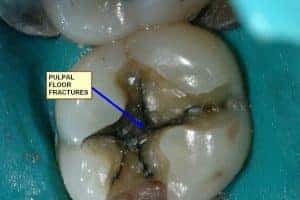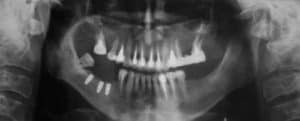Cracked teeth can be extremely uncomfortable since they exhibit a range of symptoms. From intermittent pain, generally with the release of biting pressure, to pain that occurs when extreme temperatures come into contact with the tooth, this discomfort may seem to come and go. If you are experiencing any of these symptoms, visit your dentist right away.

How the tooth will be treated depends on the location, extent, and nature of the crack. So why is a cracked tooth painful? Under the enamel of the tooth is a hard layer called dentin, and beneath that is the soft inner tissue known as the pulp, where the tooth’s nerves and blood vessels are located.
When the dense, outer layers of the tooth become cracked, biting causes the pieces to move, leading to pulp irritation. Ultimately, the injured pulp will become too damaged to restore itself. In time, a cracked tooth will begin to hurt without any provocation, and could even become infected.
Categories of Cracked Teeth
There are three basic types of cracked teeth: craze lines, fractured cusp, and split tooth or vertical root fracture. Cracks occur when there is a disruption of the structure of the tooth. With tooth cracks, there are no pieces of the tooth that separate from the whole. On the other hand, fractures are when a section of the tooth is breaking away or parting from the whole. Things such as trauma, dental restorations, the bite relationship between opposing teeth, or harmful habits such as teeth grinding and clenching can all lead to cracking.
Craze Lines

Fractured Cusp

Cracked Tooth
A tooth crack spreads from the chewing surface and moves vertically towards the root of the tooth. In some cases, the crack may even reach below the gum line and even into the root. Because of this damage to the pulp, a root canal is usually necessary. Early detection and treatment is essential to preventing the loss of your natural teeth.
Split Tooth
When a cracked tooth is left untreated for too long, it usually results in a split tooth. This is identified by a crack that causes distinct pieces to separate.
Vertical Root Fracture

Diagnosis
Dr. Brusky will use trans-illumination to determine whether or not the tooth is cracked. This is done by shining a light through the tooth and looking for a dark line. The beam of light will continue to penetrate through until it meets space, then the light will reflect. If the enamel and dentin are intact, the light will go all the way through. If a fracture or crack is present, it will bend, and a dark line will be seen. Some cracks in teeth cannot be seen until the old filling (usually silver) is removed from the tooth, which then reveals the cracks under cusps or in the floor of the tooth. Probing the gums around a tooth can identify fractures in the roots as well.
Bite and Release
A bite and release test can check for discomfort by biting down and then releasing it. Pain upon release could very well indicate a cracked tooth.
If you have a broken or cracked tooth, or you suspect that you do, call or visit Dr. David Brusky’s office to schedule an appointment.





